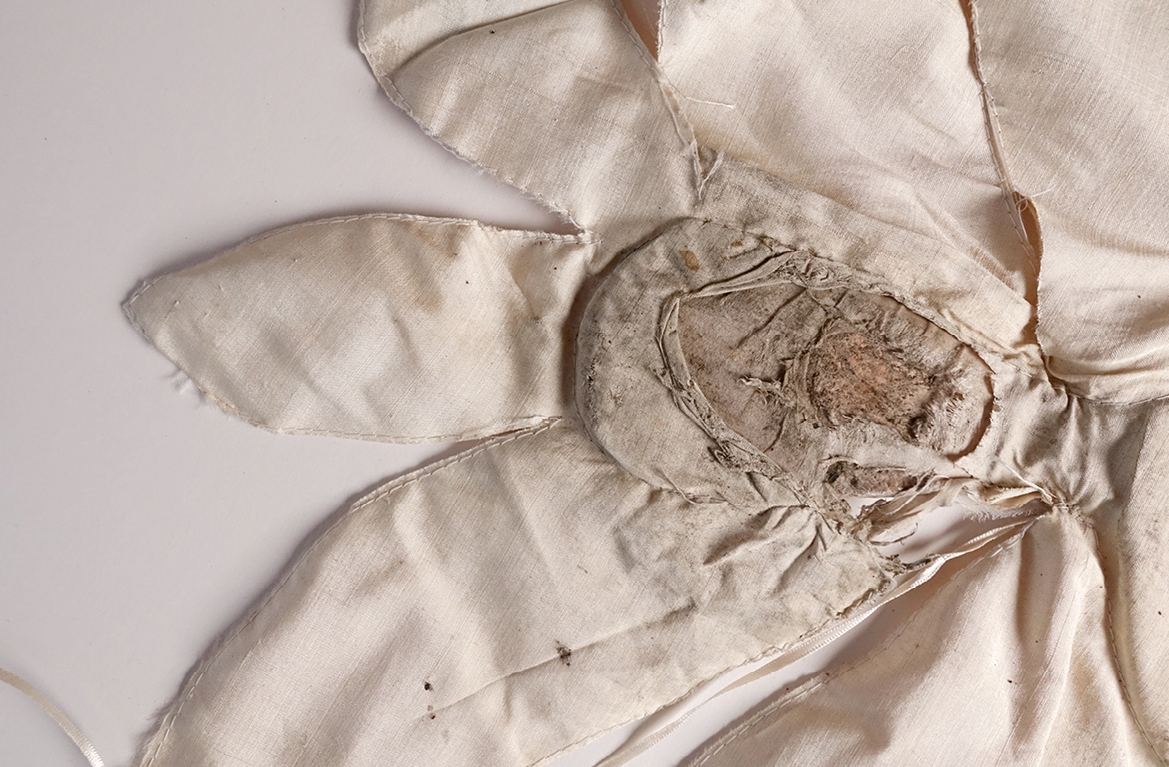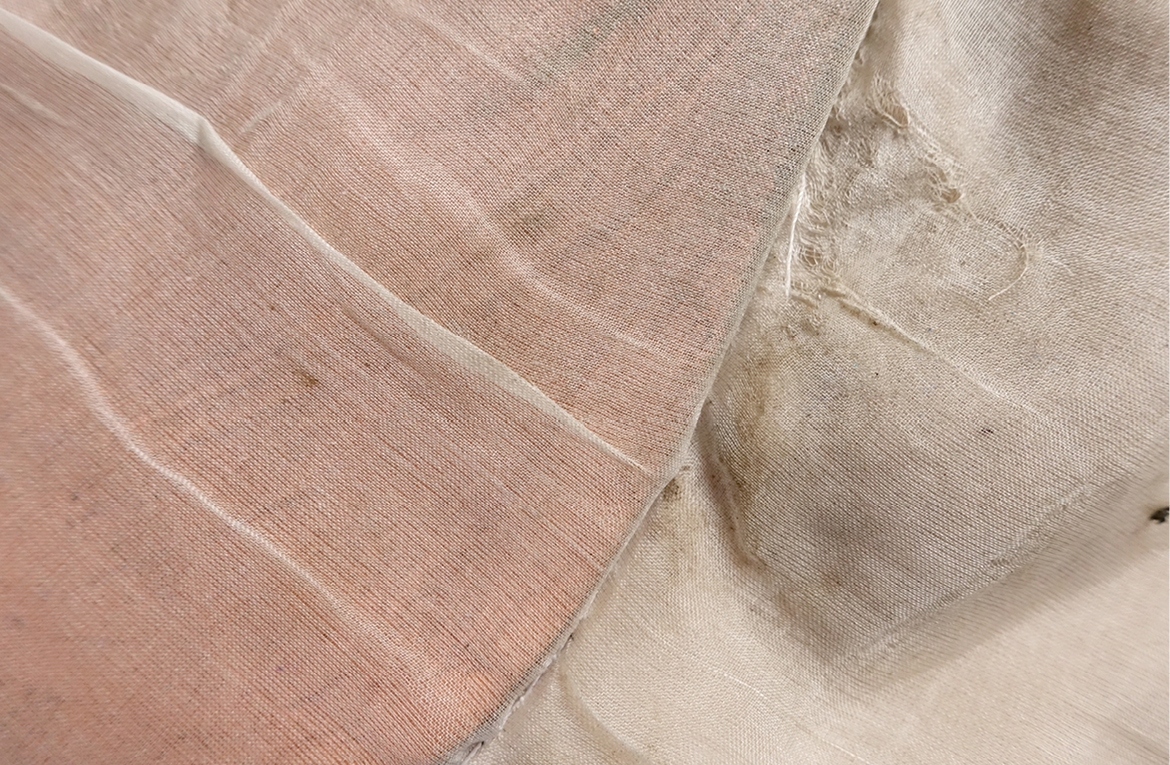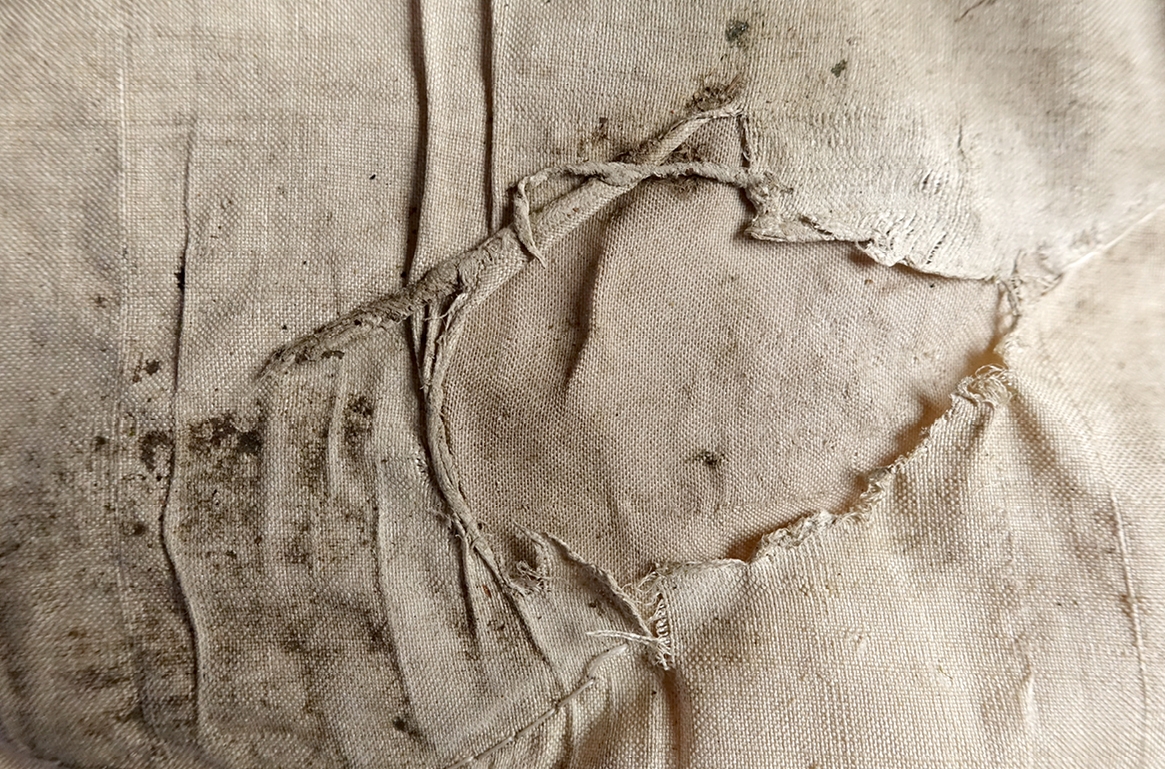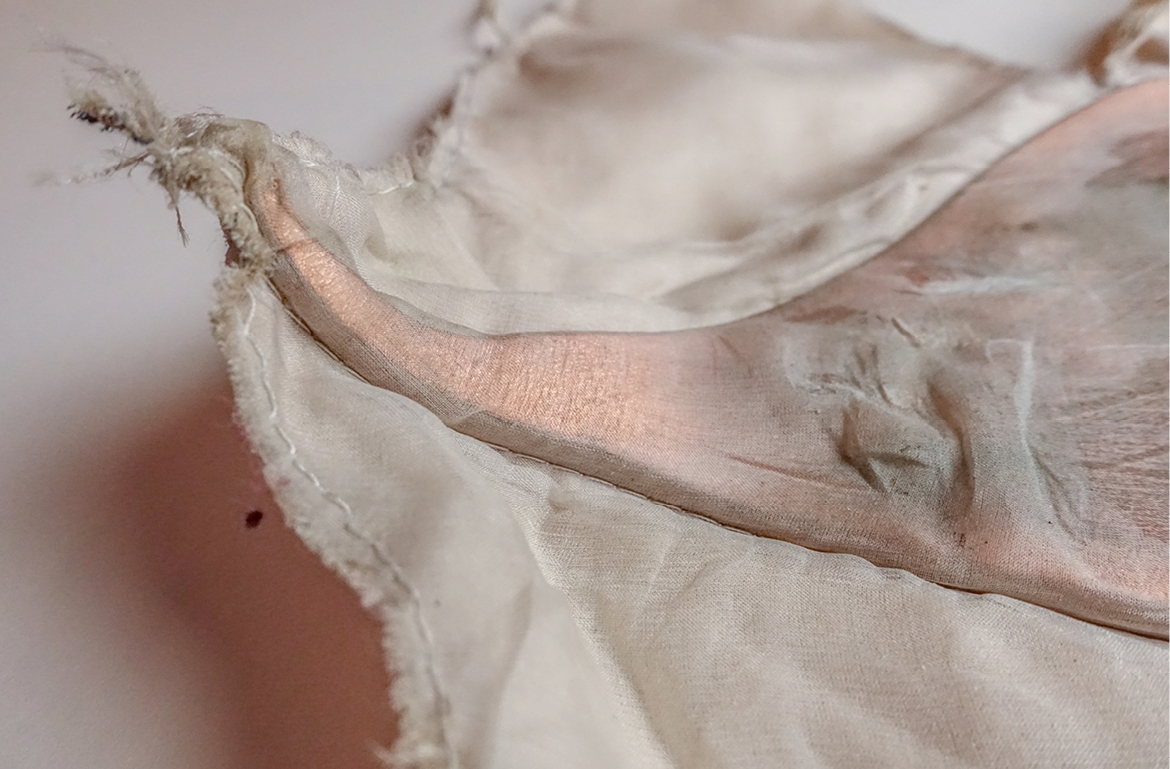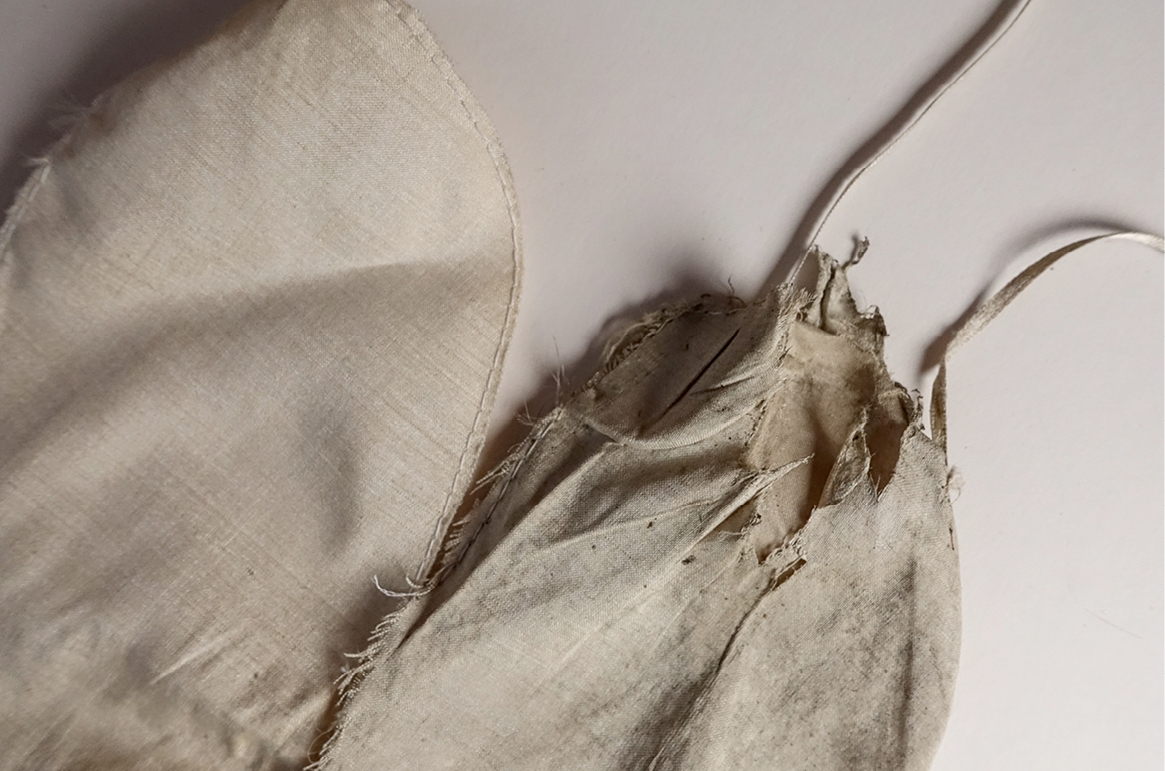Creases, Crumples, and Folds
The writing and images below are adapted from my doctoral research (RCA, 2016). The project examined the embodied experience of wearing shoes and how the effects of wearing upon the shoe, the marks of use and wear, come to embody experience. Rather than drawing on a social science methodology of object based interviews or participant observation, or a historical/humanities methodology or archival or image based research, the research utilized processes of wearing, performance and photography to examine attachment to and with our clothes.
I ask you to pause and to look at what you are wearing, the reality of your clothes. Look closely at the creases in the sleeves of you shirt where you have sat hunched and typing all day; the scuff one your soles where you kick your heels as you wait for the bus; the stain where you ate your breakfast quickly or leant to hug you child. You are dressed in the things you have done today, and the things you have done before. You are enveloped in material memories.
Over time[1] garments become records of lived experience, covered with the marks of use. Wear is materialised in clothing in many ways, in stretching, tearing, abrading and creasing – marks made in a repetitive cycle, each one begetting the next. These marks are not singular, linear or orderly; instead they overlap, each one impacting and producing another. Marks pile one on top of the other, becoming less intelligible and distinct with each movement, each gesture, each step. The layering of imprints is not a linear process, one set of imprints masking the next; instead, the process of inscription is complex, imprints jostling together non-contemporaneously. As a garment is worn, its surface becomes a map of the actions performed within it.
Time is present in all material things; they are both of “a” time (when they were made, altered or used) and material manifestations of the passage of time itself. A Victorian shoe, for example, is not only a manifestation of when it was produced but also of the progression of time since that point. The passage of time is apparent and visible in the material world. It is this confluence of “having-been-there” and “here-now,” which Barthes (in reference to the photograph) refers to as “spatial immediacy and temporal anteriority”: material culture always exists between two times. The marks of use and wear presence this dissonance; material records of the shift between the “here-now” and “there-then.”[2]
Garments show the traces of use and wear in many ways; these are the intersections of bodily imprint and material decay. Frequently the first signs of use are a creased[3] or crumpled surface; the wrinkling and folding of fabric to accommodate gesture. Unlike tears or stains creases are not the wearing away of matter or a building up of residue, but an inversion, a contortion of the material’s form. Creases are the transformation of a surface through action, gestures embodied in a material form. Most commonly creases occur at the joints of our bodies flex, bringing together non-adjacent sections of fabric to create pockets, ridges, and furrows. Creasing is thus, a manifestation of the fabric’s resistance to compliance: silicon cannot crease because it is infinitely pliant; rice paper cracks and tears because it is rigid and crisp. Fabrics which crease must both accommodate the gestures of the body and resist them. Creases are lines drawn through movement, gestures retained in a physical form.
A crease differs from a fold, not in the end result – though folds imply something neater and more precise than a crease – but in the intentionality of the action, the thought behind the mark. Folding implies intention and purposive agency; creases are often (though not always) unintentional, the resultant trace of an action rather than its aim. As we walk and move the creases on of clothes produce a network of lines, a map of our movements; each crease connects to another just as each gesture flows into the next. These networks of lines, alongside other marks of use, are cartographies of our experience. The crease is both a record of gesture and that same gesture continued: a line of flight away from the body. Gesture freed from the bounds of the body continues as a line across the material’s surface.
Confronted with these creases we are often compelled to smooth them to negate and erase what has come before. Smoothing is a form of erasure, of material forgetting; smoothing wipes the slate clean. On an everyday level, the act of ironing a garment renders a garment amnesiac, it forgets the previous day’s creases and gestures. The erosion of a surface to smoothness creates a paradox: the deletion of records through the process of their materialisation. Smoothed objects may be appealing because they carry no record of the past on them; they are a blank slate, an absolution. Conversely, creases, whether on our clothing, skin[4] or sheets, cannot conceal the actions that produced them.
Marks of use upon on a garment may be both records of the events through which one might narrate a life (the rites of passage, journeys or achievements), and simultaneously of its habitual minutiae, the multiple repeated acts, which make up our everyday lives.
Though a crease starts with a single gesture, it is deepened by repetition over time. Creases frequently embody our habitual gestures; at times one may even recognise a wearer through the creasing of their clothing.[5] Just as knowledge is inscribed on the mind-body through repetition, deep creases may be incised through repeated acts: the material learning and responding to the practices of the body. A crease is a material memory, an archive of an act repeated over time.
As material creases, its surface turns in upon itself, becoming a hinge that cleaves the material, allowing discontinuous parts to meet. This cleavage, through which non-adjacent parts of an object meet, brings to mind Serres’ description of time as akin to a crumpled handkerchief:
If you take a handkerchief and spread it out in order to iron it, you can see in it certain fixed distances and proximities. If you sketch a circle in one area, you can mark out nearby points and measure far-off distances. Then take the same handkerchief and crumple it, by putting it in your pocket. Two distant points suddenly are close, even superimposed. If, further, you tear it in certain places, two points that were close can become very distant. This science of nearness and rifts is called topology, while the science of stable and well-defined distances is called metrical geometry.[6]
For Serres, the handkerchief serves as a metaphor for understanding time not as a metric system but as a topology. The surface of the cloth may be rearranged through crumpling or tearing, or be cast out and drawn back in like a net. While Serres uses the materiality of this habitual object as a metaphor for temporality, material things function not as topologies, but as topographies of time. We can extend this metaphor of maps to our clothes; in stretching, scuffing and creasing, the surface of a garment becomes a complex map of experience rather than a linear chronological record. Our relationships with our clothing are made apparent in these transmissions of experience; the reciprocal cycle of imprint between body and the garment. These are transmissions are the passage of experience from immaterial into material and back again: they are spaces where things and thoughts collide. As a surface creases, the geography of the object is disrupted, close becomes near, and near becomes far. As a garment wears down through use, the body is enveloped more closely in its folds. Simultaneously the creased the surface creates pockets or containers. The ridges and valleys of a worn surface capture both matter shed from the body and matter distributed from the outside world. The surface of a used garment becomes a container its pocked surfaces become imbued with a particular kind of resonance. The used garment is both a mediating surface and a vessel for minute traces of the journeys and gestures the body undertakes. The creased surface is an archive.
Notes
[1] Often we understand the passage of time by our distance from an event, object or location; time as a measuring process. The incremental changes that mark its passage are too numerous and varied for our minds to comprehend or retain. Material things, however, do retain these incremental changes. The use of the material to record and mark the passage of time, to bear witness to what we cannot retain, is deeply rooted in our culture. We watch the tides, the sun and the seasons; we count rings on trees, measure shadows, watch clocks.
[2] Roland Barthes, Camera Lucida, Translated by R. Howard (New York: Hill & Wang 1977), 44.
[3] As the shoes I made for my research creased their surfaces became more appealing to me; they became bodily – more intermingled, more mine. Each crease felt poignant, an unintentional record; the surface of the shoe sacrificed unthinkingly in the process of my daily life. Creases are ‘poignant’ in a way that folds are not. There is I think a particular resonance to worn things, a particular sense of awe of their survival, of artefacts and of experiences. We do not feel for that same awe for immaculate surfaces, the smooth surface has retained nothing; it has not experienced, learnt, or survived.
[4] In Thinking Through the Skin (2001) Ahmed and Stacey write that ‘In consumer culture we are encouraged to read skin, especially feminine skin, as something that needs to be worked upon in order to be protected from the passage of time or the severity of the external world, or in order to retain its marker of gender difference in the softness of its feel’ (Ahmed and Stacey, 2001, p.1). This signifying quality of skin is emphasised by Connor in his The Book of Skin: ‘The skin figures. It is what we know of others and our selves. We show ourselves in and on our skins, and our skins figure out the things we are and mean: our health, youth, beauty, power, enjoyment, fear, fatigue, embarrassments or suffering.’ (Connor, 2003, p.50)
[5] See Hauser (2004) “A Garment in the Dock; or, How the FBI Illuminated the Prehistory of A Pair of Denim Jeans,” Journal of Material Culture 9.3 (2004): 293-313.
[6] Serres, M. with Latour, B., Conversations on Science, Culture and Time. Translated by R. Lapidus (Ann Arbor: University of Michigan Press, 1995), 60.
Reference List
Ahmed, S. and Stacey, J. (2001) Thinking Through the Skin. London: Routledge.
Barthes, R. (1977) Camera Lucida. Translated by R. Howard. New York: Hill & Wang.
Chapman, J. (2005) Emotionally Durable Design. London: Routledge.
Connor, S. (2003) The Book of Skin. London: Reaktion.
Hauser, K. (2004) A Garment in the Dock; or, How the FBI Illuminated the Prehistory of A Pair of Denim Jeans. In Journal of Material Culture. 9. (3). London: Sage. pp.293-313.
Serres, M. with Latour, B. (1995) Conversations on Science, Culture and Time. Translated by R. Lapidus. Ann Arbor: University of Michigan Press.

